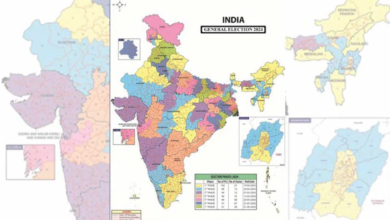Editorial: Himalayan problem

Following decades of neglect, land is crumbling in several parts of Uttarakhand like Uttarkashi and Karnaprayag and in Himachal Pradesh.
Hyderabad: It’s a problem of Himalayan proportions, literally and figuratively. Joshimath, the sinking temple town in Uttarakhand, may be in the news recently but the problem of land subsidence is not confined to one district or a State. Following decades of neglecting the environmental balance, the land is crumbling in several other parts of Uttarakhand like Uttarkashi and Karnaprayag and in Himachal Pradesh. The spectre of a Joshimath-like disaster also looms large over the congested hill towns of Shimla and Darjeeling in West Bengal, which are popular tourist destinations. There is an urgent need for long-term national and State-level plans for disaster prevention in the Himalayas, prioritising it over disaster management and mitigation. Unregulated construction, be it in the name of development or boosting tourism — has taken its toll on ecologically fragile regions. Although work on highway and power projects sanctioned during the last decade is underway in the environmentally fragile Uttarakhand, there is an urgent need to review these projects to strike a judicious balance between development work and environmental concerns. This may dampen economic growth and job creation, but it has to be carefully weighed against the risks of an ecological disaster in the area. A study conducted by 12 scientific organisations, including the National Remote Sensing Agency (NRSA), had reported that over 99% of the mapped area of Joshimath was landslide-prone in various degrees. Experts believe that unplanned construction, overpopulation, hydropower projects and obstruction of the natural flow of water may have led to the present disaster in Joshimath.
The Uttarakhand environmental crisis has not surfaced overnight. It has been in the making for decades and the warning signals were consistently ignored by the successive governments. In 1976 itself, a panel, set up under the chairmanship of Garhwal Commissioner Mahesh Chandra Mishra, had recommended that major construction works should not be carried out in the city and in the Niti and Mana valleys as these areas are situated on moraines — a mass of rocks, sediment, and soil transported and deposited by a glacier. Joshimath, a strategic pitstop for the pilgrims bound for Badrinath, Kedarnath and other temples, is located on the site of a landslide and cannot support a high rate of building activity. The location is also significant since the Army Cantonment here is close to the China border. Despite the warnings from experts, the region has been witnessing haphazard construction activity including the hydropower projects and the widening of the national highway for the ambitious Char Dham project. The entire region from Chamoli to Joshimath had faced disasters in the past. The floods of 2013 and 2021 had caused major devastation. Following the Kedarnath tragedy in 2013, a two-member Bench of the Supreme Court had taken cognisance of the ecological hazard caused by hydel projects in Uttarakhand.







